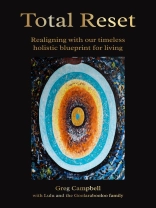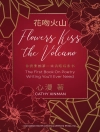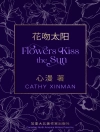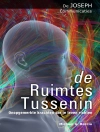In 1991 the author met Lulu, a widely-respected Aboriginal elder and powerful maban (shaman) in the remote Kimberley region of Australia who asked Greg to work with him and the Goolarabooloo people to write one book. Its purpose was clear: enable people to view reality through the lens of original knowledge and apply it for the well-being of one another and our Whole Earth system. Total Reset is the result of the 31-year collaboration.
Though many are increasingly concerned about what is happening on our planet as its sixth mass extinction event unfolds (the first driven by people), the focus is usually on the latest cracks in the dam wall and how to fix them. The root cause – the dam’s existence in the form of the constructs of post-Neolithic societies – remains unaddressed. As a result, the only change in a multi-millennia trajectory towards the precipice is the speed, which appears to be going exponential. Traditional Indigenous elders such as Lulu maintain that sapiens’ original knowledge provided all peoples with a blueprint for living respectfully on Earth. Known by the First Australians as First Law (and by others as Earth Law or Natural Law), it operated from Day One to preserve the balance of all life. No ordinary blueprint, it is a cosmic pattern showing the elements of the whole system and their connectedness; a holistic model able to be fully embraced by all people.
Part 1 of Total Reset considers how humanity’s present predicament arose, provides an evidence-backed summation of our world’s endangered state and then contrasts modern socio-economic settings with those of traditional Indigenous peoples. Interwoven through information-rich chapters are stories from the author’s life illustrating how opening to the oneness reality positively impacts individuals and society. Part 2 explores sapiens’ original knowledge of unified modes of living and being on Earth, pointing to commonalities of the structures, systems and ways of the many different societies of our world’s oldest continuous cultures, those of the First Peoples of Australia. It is enriched by stories of the author’s experiences with Lulu and his people. Part 3 begins with a classic illustration of the exploitative nature of modern societies by describing the 2005-13 Battle for Walmadany when some of the world’s largest corporations joined with governments to industrialise sacred land. Their failure to overcome the Goolarabooloo’s inspired defence brought into focus life-affirming alternatives to exploitative mindsets and practices. When anyone looks at reality through the lens of original knowledge such as that shared in Total Reset, it opens boundless opportunities for innovative solutions to remove threats to the continuity of all life and drive a return to balance. Accordingly, Part 3 outlines some of many possible strategies – at the global, national, regional/local and individual levels. They include the regeneration of autonomous, interdependent local communities anchored by holistic worldviews where custodial care of a toxic-free natural world is demonstrated, non-financial values prevail and notions of kinship and self are expanded.
At this critical time in the human saga, the real solution is not a further expansion of globalist rule under the guise of The Great Reset, it is a rapid evolutionary adaptation in the form of a Total Reset of how people live on Earth, propelling the re-emergence of societies free of wars of conquest and control, whose people live in a non-disruptive balanced relationship with the natural world and experience meaningful, empowered lives of dignity and freedom. After all, the evidence suggests it is how the First Peoples lived for not less than 2, 600 genera
Mục lục
Dedication
Guidance about text
Foreword
Introduction
PART 1 Our Past is Present for Our Future
Image: Lulu
Chapter:
1 Lifelines: Inside the cultural bubble
2 Unlocking the door to freedom
3 Lifelines: Jupiter, the brightest star in the sky
4 A vision for humanity
5 Lifelines: Hidden treasure
6 Humanity’s choice: homeostasis or extinction
7 Lifelines: The serpent’s bite
8 Holistic societies unite what dichotomous societies divide
9 Lifelines: The play of consciousness
10 The truth of our deep past reveals the way forward
11 Lifelines: There are many ways
12 Reclaiming our future
13 Lifelines: The serpent power in action
14 The global elite and reframing the meaning of progress
15 Lifelines: The Zen of yacht racing
16 Humans simply being
PART 2 Living Light
Images: Goolarabooloo people and Country
17 Lifelines: The old man and the boomerang in the tree
18 The bottom of everything
19 Lifelines: The Rainbow Serpent
20 Oneness reality
21 Lifelines: Singing the dance of life
22 The natural world
23 Lifelines: The proper way, gotta look after everyone
24 Living together
25 Lifelines: We gotta drown in it, become it
26 The affluence of money-free societies
27 Lifelines: Can they see?
28 Who am I?
29 Lifelines: Livin’ in Bugarrigarra, true feelin’ we got
PART 3 Walking the Dreaming
Image: Lulu
30 Living respectfully in a world worth living in
31 The Battle of Walmadany: The clash of two dreamings
32 Illustrative blueprint of a holistic society
33 Pathways to holistic societies
34 Global pathways
35 National pathways
36 Regional-local pathways
37 Individual Pathways
38 Walking together
Appendix 1: Lurujarri Heritage Trail: Location
Appendix 2: Map: Yanijarri-Lurujarri dinosaur track-sites study area
Appendix 3: Kim Akerman, Brief Notes – Paddy Roe and the Goolarabooloo (Native Title) Findings
Glossary
Bibliography
Index
About the author
Giới thiệu về tác giả
Greg Campbell is the 74-year-old author of the ground-breaking work, Total Reset (also available with an author-signed option on its website, totalreset.com.au). If you ask him who is responsible for this inspiring tome, more than three decades in the making, he will tell you he is not an expert on anything, merely a translator of received knowledge. His youthful pursuits included football, reading, surfing, chess, law studies and driving 100-tonne trucks, an unextraordinary life forever changed when the Rainbow Serpent arrived and initiated the 23-year-old into the other-dimensional reality, revealing the hidden fabric of our material world. Thereafter, life unfolded under that influence, initially in the company of Indian sages, followed by public service and subsequent business success. The corporate cultural change consultancy he founded was lauded for its broad innovative approach and highly ethical principles but was merely preparation for what was to come for the Rainbow Serpent’s plan for Greg was simple: live with traditional Aboriginal keepers of wisdom and work with them to share with all peoples the original knowledge of the timeless principles for living that enable balanced, enduring societies in which all are respected. Though business was booming, the 38-year-old chose to exit corporate life and in 1991 went to live in the remote Kimberley region of Australia with Lulu, a traditional Aboriginal elder and powerful maban (shaman), and his people. Concerned about the world’s well-being and threats to the continuity of all life, Lulu asked Greg to work with him and the Goolarabooloo people on one book. During a 31-year process, Total Reset slowly emerged with knowledge carried unbroken for thousands of generations. It reveals the First Peoples as the holders of holistic principles integral to our species’ design and ever capable of application; humanity’s original blueprint for living. Total Reset honours Lulu’s wish for people to be able to look at our world through different lenses and in that light join together to reset how we are living on Earth, abandoning humanity’s 5, 000-year trajectory of division and destruction in favour of holistic ways of being and doing. In Greg’s words, ‘At this critical moment in the human saga, what is needed is not a rebranding of globalist rule under the guise of The Great Reset, it is a Total Reset in which we let go of the constructs of domination and division and re-embrace holistic constructs that long enabled the wellbeing of all peoples and our Earth.’ Greg resides near the Leeuwin-Naturaliste National Park in southwestern Australia, surrounded by trees, birds and kangaroos, simply being.












